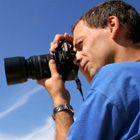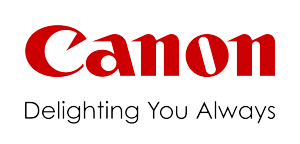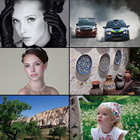What is macro photography? Put simply, it is photographing close-up images of small objects. For example, you can be taking macro photos of a flower petal, a postage stamp or even your watch. Macro photography magnifies the small subjects by many times, and makes it possible to appreciate fine details which are otherwise unseen by the naked eye. There is a world of unseen beauty right below our noses!
What do you need to start off in macro photography? Many of the Canon EF zoom lenses have built-in macro functions that allow modest close-ups of objects. You can take great images of flower petals and such with the integrated macro feature. If you wish to get even closer, you can attach close-up lenses such as the Canon 500D to your existing lens, giving you greater magnification without spending too much.
If you are serious about close-up photography and want to go really close-up, consider investing in a dedicated macro lens such as the EF-S 60mm or EF 100mm Macro. These lenses give you life-size magnification, and deliver exceptional close-up quality.
But whichever lenses you choose to use, you should be shooting with a tripod. When shooting close-ups, the magnification factor is very high and the tiniest camera shake will be very obvious. Using a tripod will help to cut down any vibration and deliver crystal-sharp images. Some photographers use a cable release to fire the shutter, so that they will not accidentally move the camera while firing the shutter. If you do not have a cable-release, you can set to self-timer release so that any vibrant from your hands pushing the button would have ebbed by the time the shutter fires.
An important aspect to note during macro photography is that the depth-of-field is very shallow. There is usually barely enough focus to cover the entire image, so you have to be very careful controlling the focus on the most important portion of the subject. For example, if you are shooting close-up of flowers, you'd want the stigma to be sharp. You can try to stop down the lens (since you are using a tripod, slow shutter speeds should not affect your image), but even then the depth-of-field is still shallow at such high magnification.
And when you are shooting close-ups, the subject is usually very close to the front of the lens. As such, the light source may be blocked by the camera or lens. You can try to reposition the subject/camera or source of light so that the subject is not obscured from the light. Alternatively, you can use mini white cardboards to reflect light back to the subject.
For the serious macro photographer, you might want to invest in specialized macro flash units. The Canon MT-24EX features twin flashes mounted onto the front of the lens to give even lighting regardless of the proximity of the close-up subject. Or you can look at the Canon MR-14EX ring flash that works like the MT-24EX, except that it provides a shadowless ring of light around the subject.
The world of macro photography is fascinating and fun, and the best part is that you can find great macro subjects anywhere and anytime! So if you are stuck at home on a rainy day, whip out your Canon EOS camera and start snapping macro photos. Oh yes: the raindrops on your window make excellent macro subjects too!


